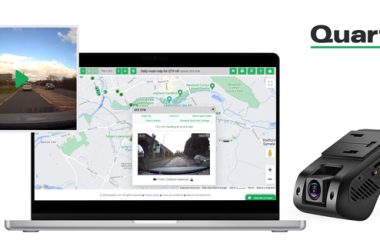Last Updated on: 11th March 2025, 12:47 pm
Are you interested in solar PV for your business but have no idea where to start? The number of companies classed as SEMs in the UK is overwhelming at an estimated 99.9%. With the government’s 2050 net zero emissions targets, it is crucial that small businesses play their part in helping reach this goal.
Installing solar panels is a perfect option for reducing emissions and saving a bit of extra money with reduced energy bills. However, for business owners that are unfamiliar with solar panel installation and all the options available, the idea of running their business on renewable energy can be a bit daunting.
The article will provide you with the basics of solar power and how installing solar panels on your rooftop could be a great way to make your company more sustainable. After all, what could be better than making your business more environmentally friendly and saving money at the same time?
The Cost Of Solar PV For Small Businesses
Unfortunately, the UK government feed-in tariff (FiT) scheme closed to new applicants in March 2019, but the price of solar technology is the lowest it has ever been. The FiT scheme paid out two different kinds of tariffs. There was one for generation and one for export of surplus renewable energy produced by the customer. These favourable rates meant that it would take five and a half to six years to recover purchase and installation costs.
In January 2020, the UK government replaced the FiT scheme with a new incentive called the Smart Guarantee. Although the new scheme is missing the ‘generation’ tariff, it still allows businesses to continue selling renewable energy to the Central Grid. In addition, with PV solar panels now being so reasonably priced and efficient, the payback is now around five years, so the Smart Guarantee works out better than the FiT.
It is essential to keep in mind that these estimates are more relevant to businesses that invest in large solar panel installations. For example, a 20,000 sq ft warehouse will accommodate approximately 300kWp worth of panels at the cost of around £200,000 and a 50,000 sq ft warehouse will allow 1MWp to be installed at the cost of £625,000. Solar installations of this size or under do not require planning permission to go ahead.
Fully Funded Solar Installations
If you are not in a position to invest in solar panels for your business, there are some renewable energy companies out there that offer a purchase power agreement. With these agreements, it tends to be an arrangement where the energy company pays for and owns the solar panel system, including the electricity generated. It then sells the power back to the business over a period of around 30 years. An SME with about one megawatts-peak of solar installed could then anticipate savings between £35,000-£60,000 a year off their electricity bill.
With such big savings, these types of fully-funded solar installations are popular with medium and large businesses. For companies with smaller premises, the purchase and installation will most likely be self-funded. Although the number of PV solar panels will be less, even a few panels on a tiny unit can make a difference.
Do You Need A South Facing Roof?
Needing a south-facing roof is a common solar panel misconception. If your business has an east-west roof, it is actually better positioning for the PV solar panels than a south roof as it will get sunlight for more hours of the day. A south-facing roof will indeed get a superior energy yield, but an east-west roof will be exposed for longer.
With that said, the modern panels are so efficient at generating solar energy that they are now being installed on north and south ridges of roofs. Solar companies also now have some incredible software that can determine the best location and angle for maximum energy yield.
If you have any concerns that the UK is not a good place for solar energy, it is actually not so bad. PV solar panels become less efficient when temperatures reach 30 degrees Celsius or more. The optimum temperature is 24 degrees Celsius, so although the UK climate is not always hot and sunny because it is cooler, there is potential for good efficiency from solar panels.
The Other Benefits
If your business has set sustainability and emissions targets, you may be reviewing all parts of the company, from the supply chain to logistics. If your business consumes lots of electricity, and you have a big roof or lots of land, solar is a great place to start tackling those bigger targets. They send a strong visual signal to customers and employees. If you are on a recruitment drive, it can also attract applicants as many people are asking, ‘what is your company doing to reduce carbon emissions?’ You can then point to the solar visual message and explain what you have done as part of your overall sustainability programme.
For agricultural businesses, solar panels can be a game-changer. With vast open spaces available, farms and rural enterprises can take full advantage of solar energy to reduce costs and increase sustainability. If you’re considering this option, check out this guide on agricultural solar panels for insights into the benefits, costs, and installation process.
It is not just large corporations that are receiving ever-increasing scrutiny to meet targets and contribute to a cleaner and greener world; SMEs are expected to do their part too. Some utility companies are being caught out by claiming they are green when all they are really doing is purchasing something called REGOs: renewable energy guarantee of origin certificates. You should check the small print to make sure your electricity supplier is buying directly from solar or other renewable energy projects.
Generating your own electricity on-site is a clear sign that your business is genuinely taking action. PV solar panels are a very powerful way of proving your company’s green credentials.




